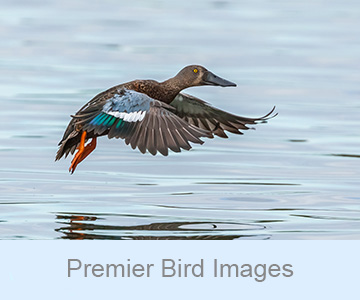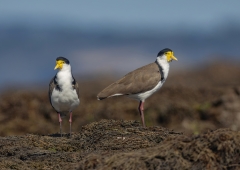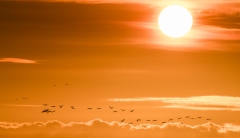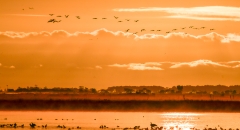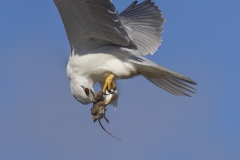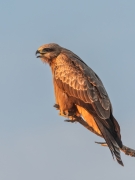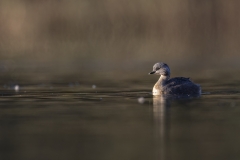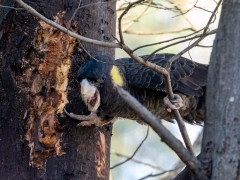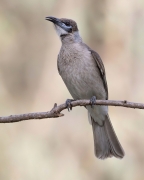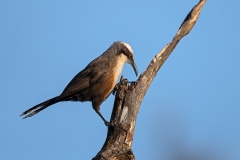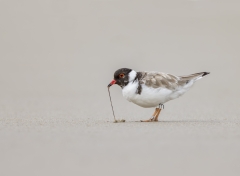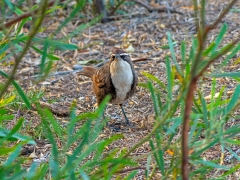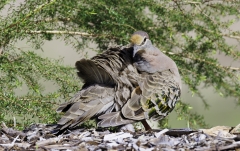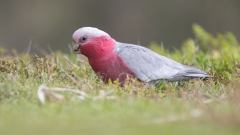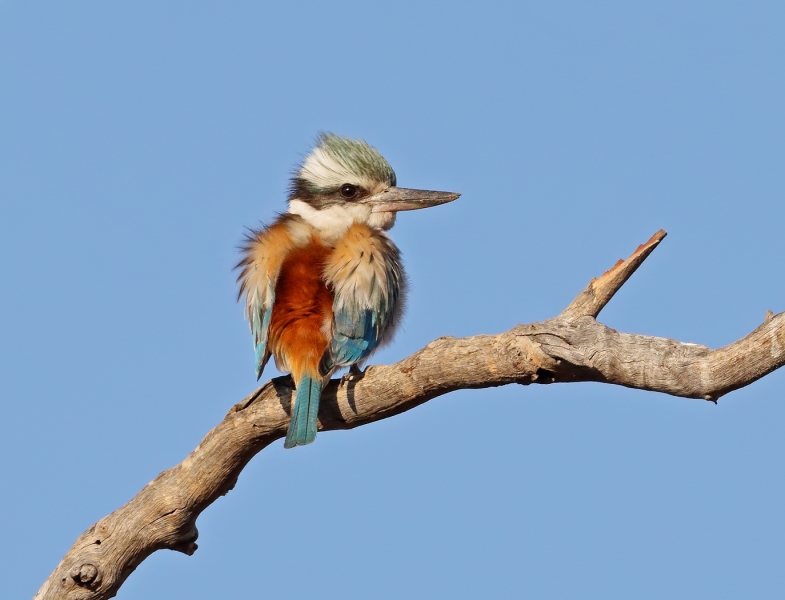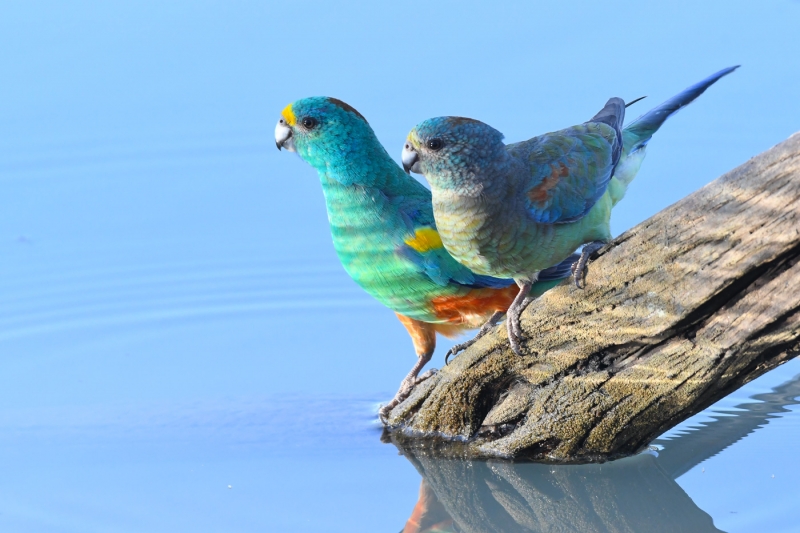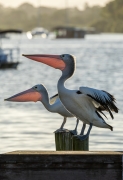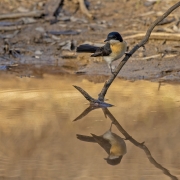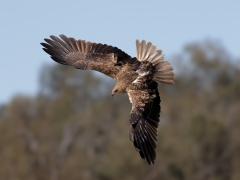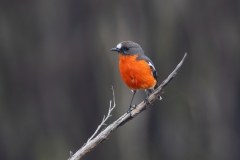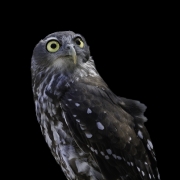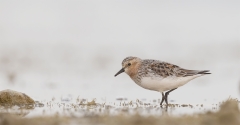This has proved to be a tough assignment for many photographers because of the harsh light and heat haze often encountered in arid regions of the country. Most of the best images were captured early or late in the day or on cloudy days. In dry country, water points attract birds so it was not surprising to find over a quarter of the images were captured around water. There are few ‘action’ shots and I was surprised not to find some outback raptors. Nevertheless, there are some outstanding images that reflect considerable credit on the photographers.
There are also a few images that should have been entered at a lower level; any photographer who is consistently overlooked by the mystery reviewers and the voting members should perhaps consider dropping back a level next year. Equally, there are some photographers in the Intermediate Level producing work of a consistently high standard who should move up to the Advanced Level next year.
Before commenting on particular images I would like to record some overall impressions. There are still some photographers who are struggling with composition, especially making the bird too big in the frame. This is a natural inclination but a point is reached where too big is too much and the bird appears to be uncomfortably ‘tight’. If you have even a slight feeling that your bird is too big, then it probably is. When facing this issue it can be helpful to prepare two versions of an image and ask an experienced bird photographer for an opinion. If a bird is too big in the frame it is usually blindingly obvious to an experienced eye. There are of course exceptions, like the head portrait, but that kind of composition is not the issue about which I am writing.
Most photographers managed image noise quite well but in many examples there is evidence of over-sharpening. Some photographers are too aggressive, especially when cropping hard and ending up with fewer pixels; in this situation it may be better to go for a smaller in the frame composition. Some sharpening is necessary because of the nature of the digital image capture process. The RAW image is always under-sampled in each colour channel and the de-mosaic operation tries to estimate the missing luminance data values resulting in a mild blur. Some sharpening is required to recover the fidelity of the original scene. Similarly, at the end of the post-processing workflow, the resampling associated with the downsize operation will also introduce a mild blur which needs to be ameliorated with some output sharpening. It is a question of how much sharpening is required and it is usually better to err on the side of less sharpening and then use some local sharpening on those parts of the bird where it is most beneficial. A splendid example of this approach is illustrated in the winning entry described below.
A few images showed poor lighting and colour adjustment. An example of the latter is the beautiful Regent Parrot (ID 31971) where too much saturation has been applied causing, among other problems, the sky reflection to look purple. Instead of using a global saturation adjustment the photographer might have done better to select the bird for a minor saturation adjustment. Making the bird too big in the frame, just touching the tail, is also unfortunate in this example.
I ended up with eleven excellent images on my short list, any of which might be winners on the right day with experienced judges. Without names - this article was written while voting was open, so images were anonymous - I am unable to see how many photographers have their work on the short list but I expect there to be a healthy 5–10 competitors in this elite group.
Winner: Red-backed Kingfisher, by Glenn Pure (Image ID 31911)
This is a stunning picture of a beautiful bird in perfect early-morning light. The position of the bird in the frame is well chosen to work with the great over-the-shoulder pose and orientation of the perch. The perfect blue sky works in harmony with the blue plumage and the contrast with the bird’s blazing red back puts this one over the top. The mesmerizing eye engagement is as good as it gets, drawing the viewer in to look more closely. It is hard to imagine a better composition to show off this species. I am particularly impressed with the way the photographer has handled the plumage details. This is an excellent demonstration of how to selectively sharpen some details while retaining the soft plumage that the bird has fluffed up to allow the warming rays of the sun to be trapped deep within. The only minor down-side I see is the perch which in a perfect picture might be a little less imposing and without the broken off piece. Overall, a superb image and worthy winner.
Highly Commended: Spinifex Pigeon, by Glenn Pure (Image ID 31912)
This is a splendid portrait recorded in difficult lighting conditions. Like the ‘bird on a stick’ scenario, the head portrait demands a very high standard of photography and this one has it all covered. There are some ‘hard’ shadows on the bird but the photographer has managed to choose the right angle for the shadows to complement rather than disrupt the scene. The smooth background tones also nicely complement the palette of the bird. With no distractions, the viewer is encouraged to look closely at the superb details which are captured in high contrast with highlights and micro-shadows produced by just the right angle of illumination. This is in the best traditions of portrait photography often used to record the travails of life etched as wrinkles in the faces of old people. The only concern I have is that the tip of the plume is a bit close to the top corner; a little more room here would have made this picture a strong contender for top honours. As it is, a worthy runner-up and highly commended.
Commended: Brown Songlark, by Glenn Pure (Image ID 31961)
This Brown Songlark is a wonderful opportunistic capture in soft light with the bird perfectly positioned in the frame. This is a good example of how habitat details can add significant interest and context with full marks to the photographer for seeing the possibility and choosing the appropriate aperture and shooting position. In fact, I think showing even more habitat to the left would be beneficial if available in the original frame. It shows how the background can complement and enhance the scene with sympathetic tones and textures that work in harmony with the bird. The photographer has made a showcase of an ordinary-looking brown bird by capturing a good head angle, deft handling of the original exposure and just the right amount of detail recovery in post-processing. It would be nice to see a little more of the bird’s feet but still a commendable image.
Commended: Mulga Parrots, by Brian O’Leary (Image ID 31888)
I am guessing the image of the pair of Mulga Parrots is the result of some careful planning and lots of patience. This kind of shot does not usually happen without knowing the bird’s habits, selecting the right shooting position and choosing the right time of day. The photographer’s prescience, preparation and patience were rewarded with a beautiful frame. To get a bird nicely in the frame is one thing, but to get a pair deserves generous applause. The blue sky reflection provides a pleasing background which works in harmony with the colour pallet of the birds. I am also pleased to see the photographer has resisted the temptation to boost the saturation and although I do not share his enthusiasm for the bands of light reflected off the water, it is perfectly acceptable. The image would have ranked higher in my estimation if there were less shadow on the flank of the female which might have been achieved with some local shadow adjustment in post-processing. The head of the same bird is slightly in front of the plane of best focus and would benefit from a little local sharpening. Overall, a gorgeous image and worthy of commendation.
Commended: Spiny-cheeked Honeyeater, by Wilson Lennard (Image ID 31930 - image no longer available)
The Spiny-cheeked Honeyeater is a fine example of how going a little bit smaller in the frame can have just as much impact as a more ‘in your face’ composition. The photographer probably did not have enough pixels on the bird for a closer crop but has nevertheless crafted a pleasant image. The background can be an important element in the narrative, as in the Brown Songlark, or it can be downplayed, as here, to ensure the viewer’s attention is only focussed on the bird. A consequence of simplifying the picture to just the bird and perch is that a higher standard of picture-making is required to achieve a competitive result. The bird and perch need to be near perfect. In this case, the presentation of the bird is very good but could be perhaps improved with a touch of mid-tone contrast to allow it to better compete for attention with the perch. The perch is acceptable but in an ideal situation would be less imposing and with the details a little ‘softer’ to allow the bird to better capture the viewer’s attention. A commendable image but not quite strong enough for a higher placing.









